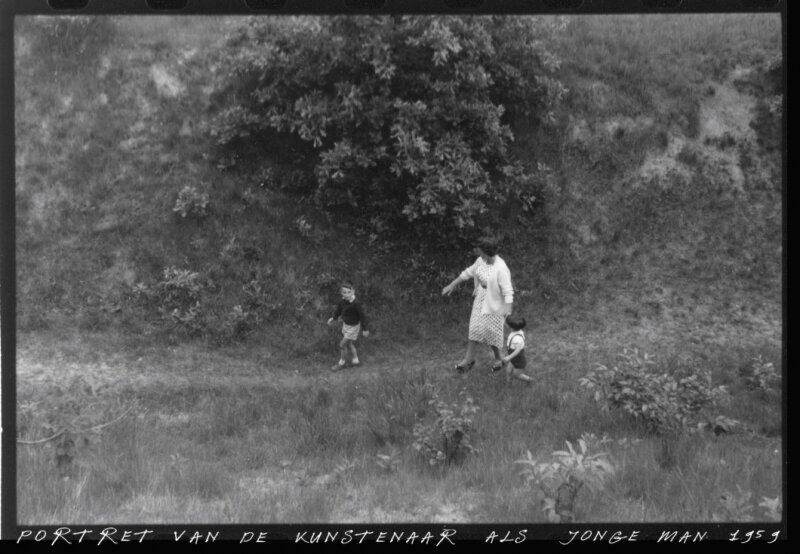
Portret van de kunstenaar als jonge man, 1959
Art’s main point of origin is no longer restricted to the solitude of a lonely studio. Instead, it is created through dialogue with others, whether or not they are physically present. Interactive elements form important aspects of the work. Originality and eternal value, so inherently characteristic of modern art, no longer hold the same importance. What does retain its gravity is what can be conjectured to be a deep seated need for immortality and the perpetual need for the self affirmative: ‘I exist!
Access to media and technical possibilities has democratised art even further. Every individual can easily express himself and make himself heard. In a similar fashion, the masses were able to make themselves seen through photography and film at the beginning of the last century. People will always want to leave a trace, no matter how trivial. One could interpret this need as the constant reshaping of identity. What they think and do takes a temporary form in the constant confrontation with the other. It’s this need that has become a basic necessity for the young today.
Internet and the mobile phone are very suitable as artistic devices. Especially the mobile phone allows us to exist in multiple contexts, or “thanks to the specific characteristic of it’s medium, mobile telecommunication disrupts typical narrative elements such as [unity] of space (setting) and linear casuality in time (plot) in addition to the image of a consistent, thoughtful character (unicity).’ Also, ‘people are exceptionally fascinated by experiences and non-rational, magical moments that they often consciously seek out’.
They are especially capable of sharing their own story—narrative, auditory, and visual—in relationship to others across the world.
Looking at artists’ work process, the exchange of image and narrative does not necessarily need to take form outside the virtual space in a desperate attempt to materialize. The temporary and imperfect character of art, especially in relationship to interaction and transition, is represented in Japanese with the term “wabi sabi.” This term expresses the relationship between beauty and transience. Leonard Koren explains wabi sabi as ‘a beauty of things imperfect, impermanent, and incomplete.’ The artist increasingly makes use of fleeting images that, through media, are globally transmitted and progressively refer to a common frame of reference.
The work is no longer a representation of the artist’s living environment. The origin and starting point of the work lies within that or, better yet, it becomes part of it. It finds a place on the Internet and in the environment, the society, and in thinking. And once again, the artwork is no longer about mass communication or about interculturality. It is about articulation, confrontation, and the invention of shared stories without a set goal.
Nicolas Bourriaud typifies contemporary art as the arena of exchange: the virtual platform of exchange that the artist, too, is a part of. Because artists utilise an artistic form in lieu of the every day form, the every day becomes extraordinary and the extraordinary becomes every day. The traces, or memories, that their work leaves behind evidences their capability to be temporarily part of that culture in a virtual (or non-virtual) place at a specific moment.